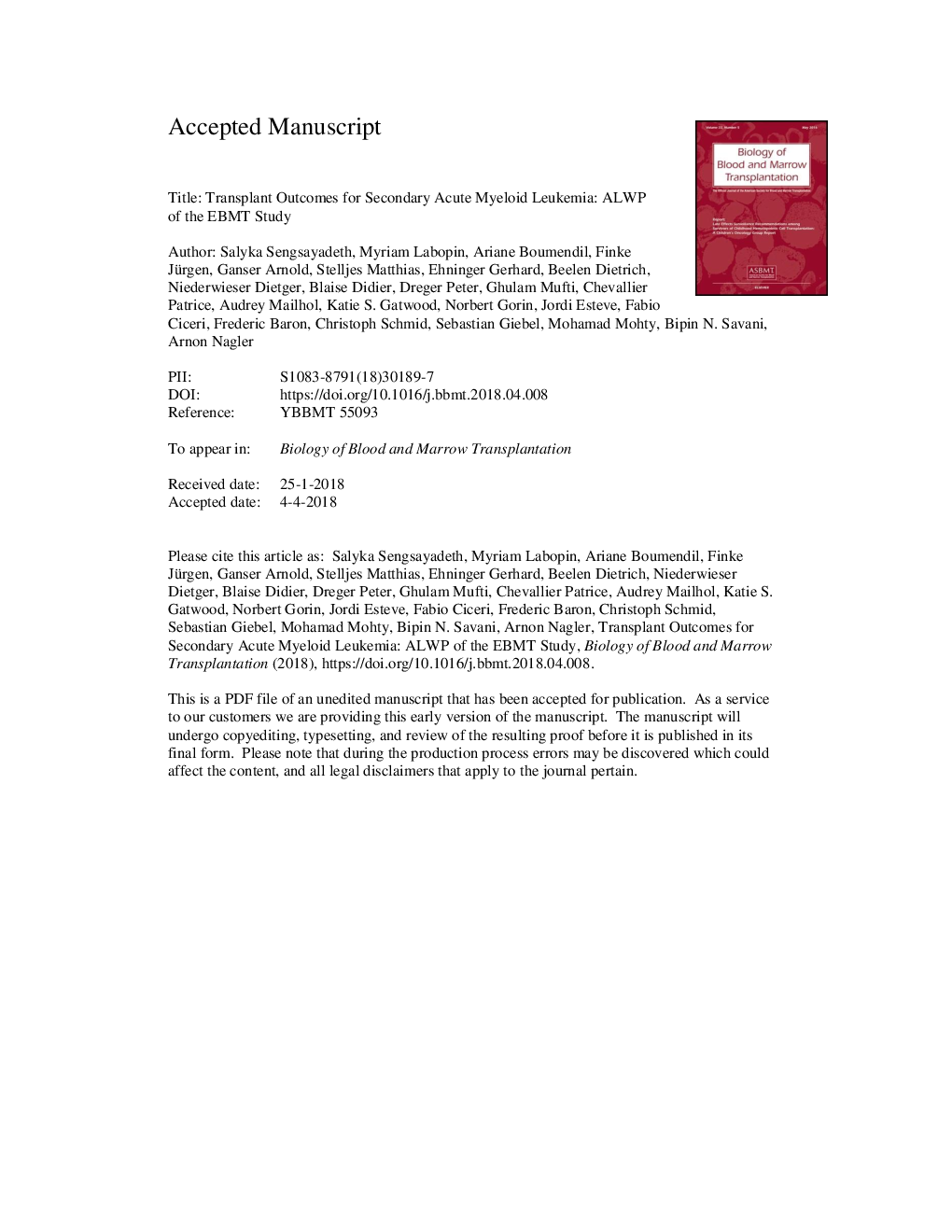| Article ID | Journal | Published Year | Pages | File Type |
|---|---|---|---|---|
| 8429719 | Biology of Blood and Marrow Transplantation | 2018 | 29 Pages |
Abstract
Secondary acute myeloid leukemia (sAML) has been associated with inferior outcomes compared with de novo AML. Little is known about patient risk factors and outcomes in sAML after allogeneic hematopoietic stem cell transplantation (HCT); thus, this large systemic analysis of the European Society for Blood and Bone Marrow Transplantation registry was performed. This study included 4997 patients with sAML who received HCT from 2000 to 2016. In univariate analysis the 2-year cumulative incidence of chronic graft-versus-host disease (GVHD), relapse, and nonrelapse mortality (NRM) were 33.5% (95% confidence interval [CI], 32% to 34.9%), 33.7% (95% CI, 32.3% to 35.1%), and 27.5% (95% CI, 26.1% to 28.7%), respectively. Overall survival (OS), leukemia-free survival (LFS), and GVHD-free, relapse-free survival (GRFS) at 2 years were 44.5% (95% CI, 43% to 46%), 38.8% (95% CI, 37.4% to 40.3%), and 27.2% (95% CI, 25.9% to 28.6%), respectively. In multivariate analysis, patients receiving myeloablative regimens had decreased relapse (hazard ratio, .859; 95% CI, .761 to .97; Pâ=â.01), higher NRM (hazard ratio, 1.175; 95% CI, 1.03 to 1.341; Pâ=â.02), and no differences in OS, LFS, and GRFS compared with patients receiving reduced-intensity conditioning regimens. Active disease, adverse cytogenetics, older age, Karnofsky performance status (â¤80%), ex vivo T cell depletion, other malignant hematologic diseases, and patient cytomegalovirus seropositivity were associated with inferior OS and LFS. These variables should be considered in patients with sAML in need of HCT, and further study regarding the impact of conditioning regimens on relapse is needed.
Related Topics
Life Sciences
Biochemistry, Genetics and Molecular Biology
Cancer Research
Authors
Salyka Sengsayadeth, Myriam Labopin, Ariane Boumendil, Jürgen Finke, Arnold Ganser, Matthias Stelljes, Gerhard Ehninger, Dietrich Beelen, Dietger Niederwieser, Didier Blaise, Peter Dreger, Ghulam Mufti, Patrice Chevallier, Audrey Mailhol,
